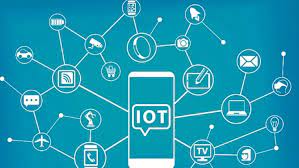Interfacing sensors with microcontrollers is a fundamental step in integrating sensor data into IoT systems. Here’s an overview of the process:
- Sensor Selection: First, identify the appropriate sensor for your application based on the specific data you need to collect. Consider factors such as the type of measurement, accuracy requirements, interface compatibility, and power consumption.
- Sensor Wiring: Connect the sensor to the microcontroller according to the sensor’s interface specifications. Most sensors use analog or digital interfaces for communication. Analog sensors require analog-to-digital conversion, while digital sensors communicate using protocols such as I2C (Inter-Integrated Circuit), SPI (Serial Peripheral Interface), or UART (Universal Asynchronous Receiver-Transmitter).
- Power Supply: Provide the necessary power supply to the sensor. Some sensors operate at specific voltage levels, so ensure compatibility with the microcontroller’s power supply or use voltage level shifters if needed.
- Signal Conditioning: Depending on the sensor and the microcontroller’s requirements, you may need to apply signal conditioning techniques. Signal conditioning involves amplification, filtering, or scaling of the sensor’s output to match the microcontroller’s input range or resolution.
- Interface Protocol: Configure the microcontroller to communicate with the sensor using the appropriate interface protocol. This typically involves initializing the communication protocol, such as configuring register settings or addresses in the case of I2C or SPI.
- Read Sensor Data: Use the microcontroller’s programming language (e.g., C/C++, Python) to read data from the sensor. For analog sensors, you may need to perform analog-to-digital conversion using the microcontroller’s built-in ADC (Analog-to-Digital Converter) or external ADC modules.
- Data Processing: Once the sensor data is obtained, you can perform further processing or analysis on the microcontroller. This may involve applying algorithms, filtering, or calibration to the sensor data, depending on the application requirements.
- Data Transmission: Transmit the processed sensor data to other components in the IoT system, such as edge devices, gateways, or the cloud. This can be done using various communication protocols supported by the microcontroller, including Wi-Fi, Bluetooth, LoRaWAN, or MQTT.
- Error Handling and Exception Handling: Implement error handling mechanisms to handle sensor failures, communication errors, or data inconsistencies. This ensures the robustness and reliability of the overall IoT system.
- Power Management: Consider power management techniques to optimize energy consumption. For example, you can implement sleep modes or power-saving strategies to minimize the sensor’s power consumption when it is not actively collecting data.
- Understand the sensor requirements: Identify the specific sensors needed for your project, which can include temperature sensors, humidity sensors, motion sensors, light sensors, etc. Each sensor will have unique interface requirements, such as analog or digital output, specific voltage levels, and communication protocols.
- Connect the sensor to the microcontroller: a. Analog sensors: Analog sensors provide continuous output values proportional to the measured quantity. Connect analog sensors to the microcontroller’s ADC (Analog-to-Digital Converter) pins. Use appropriate resistors or voltage dividers to adjust signal levels if necessary. b. Digital sensors: Digital sensors provide discrete output values (e.g., 0s and 1s) indicating the presence or absence of a certain condition. Connect digital sensors to the microcontroller’s GPIO (General Purpose Input/Output) pins. Ensure compatibility with voltage levels and logic levels of the microcontroller.
- Power supply considerations: Ensure that the sensor and microcontroller have a compatible power supply. Provide the required voltage and current to both components, considering any necessary voltage regulation or current limiting.
- Communication protocols: Determine the communication protocol required by the sensor and supported by the microcontroller. Common protocols include I2C, SPI, UART, and GPIO. a. For sensors using digital communication protocols (I2C, SPI, etc.), connect the appropriate sensor pins to the corresponding microcontroller pins. b. For sensors using serial communication (UART), connect the sensor’s TX (transmit) pin to the microcontroller’s RX (receive) pin, and vice versa.
- Write code to interface with the sensor: Develop software code to read data from the sensor and perform any required processing or control tasks. This involves using the appropriate libraries, APIs, or software development frameworks for the specific microcontroller and sensor combination.
It’s important to refer to the sensor datasheet and the microcontroller’s documentation for specific instructions on wiring, communication protocols, and programming interfaces. Additionally, many microcontroller development boards and IoT platforms provide libraries or software development kits (SDKs) that simplify the process of interfacing with common sensors, streamlining the integration process.
SHARE
